Barbie is always in style. Look no further than the all-pink outfits filling red carpets, the countless social media posts with rosy themes, and the takeover of pink in street style. The fashion trend, which has been spotted on celebrities like Lizzo and Florence Pugh, as well as on runways like Valentino, who unveiled a collection of just hot pink designs last spring, has been dubbed “Barbiecore,” in an homage to the stylish doll, whose brand identity is undeniably feminine and very, very pink.
Barbiecore is soaring thanks to the convergence of multiple cultural moments. In July, Greta Gerwig’s highly anticipated Barbie movie will hit theaters, with Margot Robbie starring as the iconic doll. And 2023 finds us well into the resurgence of early-aughts fashion and its bright, sweet styles. According to Lyst’s 2022 “Year in Fashion” report, Barbiecore was the top trend of the past year, which peaked in June 2022, when pictures of Robbie as Barbie clad in an all-hot pink Western outfit were released: her look went viral on TikTok and sparked a 416% increase in searches for pink clothing. But the trend has long been a mainstay of both celebrity and high fashion for years, cycling in and out of vogue for the past two decades.
Read more: How Barbie Came to Life
Darnell Jamall Lisby, a fashion historian and the assistant curator of fashion at the Cleveland Museum of Art, says Barbiecore has become a staple of fashion in the 21st century, recirculating every few years since the early aughts.
“If we hadn’t seen it past the early 2000s, I would have just called it a trend,” Lisby tells TIME. “But it’s definitely reiterated every few years in different ways.”
Barbie’s complicated influence on fashion
Barbie’s enduring influence on fashion in the real world is a direct reflection of Ruth Handler, the woman who created the doll, says Tanya Lee Stone, the author of The Good, The Bad, and the Barbie: The History of a Doll and Her Impact on Us. Handler was a savvy and style-forward businesswoman who created Barbie when she saw that baby dolls and paper dolls dominated the toy market. With Barbie, Handler created a doll that could give little girls the chance to embody their future dreams—whether that was becoming an astronaut, a doctor or a fashion model. And she had the clothes to match.
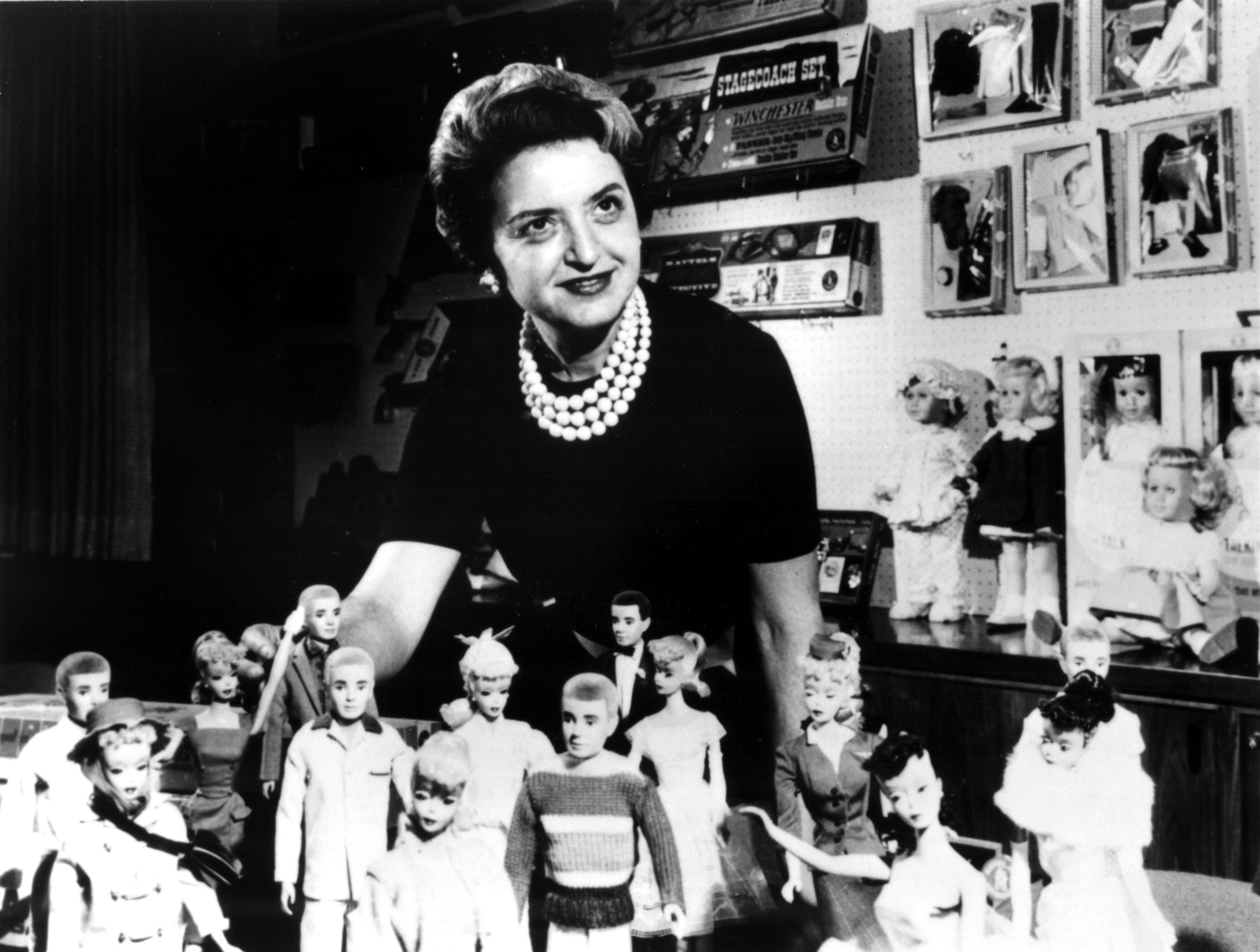
“The physicality of that kind of play for girls at the time was really limited, so she thought ‘What if I made a three dimensional model that could look fabulous in anything? And girls could dream up whatever career or type of person they want it to be and try it on for size,’” Stone says. The element of fashion as a way of imagining the future was so important to Handler, Stone says, Mattel designed Barbie’s head to pop off easily, to make it easier to change her outfits. “Her mission was to allow girls to have the imaginative kind of play that would allow them to dream about being anything they wanted to be at a time when women couldn’t be a lot of things … she wanted them to be able to be astronauts and surgeons and she was also all about haute couture!”
The first Barbie doll sported a high ponytail, a full face of painted-on makeup, and heavy-lidded eyes. She was firmly rooted in a specific idea of femininity and her clothes reflected that: Barbie came dressed in a form-fitting black and white striped strapless swimsuit, accessorized with a pair of black stiletto mules and black cat eye sunglasses with blue lenses. Additional outfits were unapologetically feminine, miniature versions of clothes that a grown woman would dream of—evening gowns, cocktail dresses, vacation wear, and sundresses. Perhaps it should come as no surprise that one of the first careers Mattel marketed for Barbie was being a fashion model or that the unrealistic aspects of her appearance, like her perpetually arched feet or her impossible proportions, were made for showcasing fashion.
Read more: A Barbie for Every Body
For Handler, it was important that Barbie represent what a woman could be and that was reflected in the doll’s clothes—an outfit could transport the player to not only a different look, but a career or a lifestyle.
“Unlike play with a baby doll—in which a little girl is pretty much limited to assuming the role of Mommy—Barbie has always represented the fact that a woman has choices,” Handler wrote in her memoir, Dream Doll: The Ruth Handler Story. “Even in her early years Barbie did not have to settle for being only Ken’s girlfriend or an inveterate shopper, She had the clothes, for example, to launch a career as a nurse, a stewardess, a nightclub singer.”
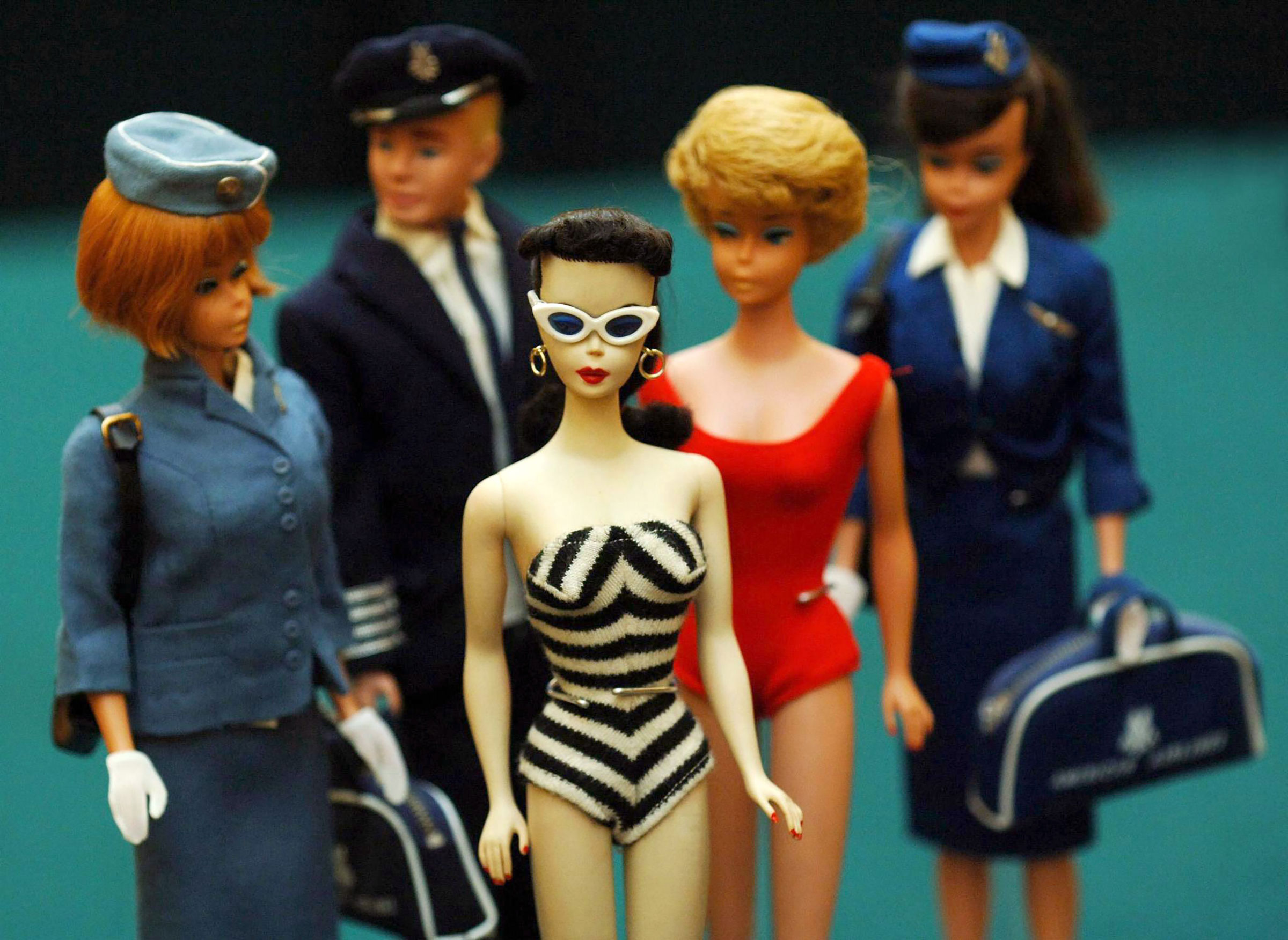
Stone attributes both the current Barbiecore trend and its influence on fashion to one of the foundational elements of the toy’s success: marketing. Mattel was one of the first companies to target children in their advertising, as opposed to parents, broadcasting commercials for Barbie dolls during The Mickey Mouse Club in the late ‘50s. This marketing strategy led to not only the toy’s immense success, but ensured that the doll had a firm and lasting hold in pop culture, as generations of children grew up to be adult consumers. The most telling example of this may be the doll’s ubiquitous association with the color pink. While the original Barbie doll, meant as a high fashion toy, didn’t have pink marketing, in the 70s, Mattel made a push to market the doll to young girls, instead of adolescent girls, and used pink as the main color for the doll’s brand identity. Now, the doll is synonymous with the color and Mattel even has a copyrighted Pantone shade called Barbie pink (219 C), a deep and bright shade of the rosy hue.
Read more: The Barbie Doll’s Not-for-Kids Origins
Barbie has had her fair share of critiques, especially when it comes to gender and diversity. Although Handler claimed to have created her as a way to empower young girls, the doll has been a lightning rod of controversy, especially in feminist circles, where she’s been held up as perpetuating unrealistic body and beauty ideals or promoting singular and outdated gender norms. The original Barbie was inspired by Bild-Lilli, a seductive blonde bombshell of a German comics character-turned sexy novelty toy, and was one of the first dolls for children to look like a grown woman—complete with an anatomically impossible hourglass figure that enraged some parents when the doll debuted. But, according to Stone, the controversial elements have also helped to keep Barbie relevant.
“She’s sometimes a doll we love to hate, but that has staying power, any time something has controversial elements,” she said. “A lot of things were bumpy along the way, but there were also advances that weren’t happening elsewhere.”
When did Barbiecore start?
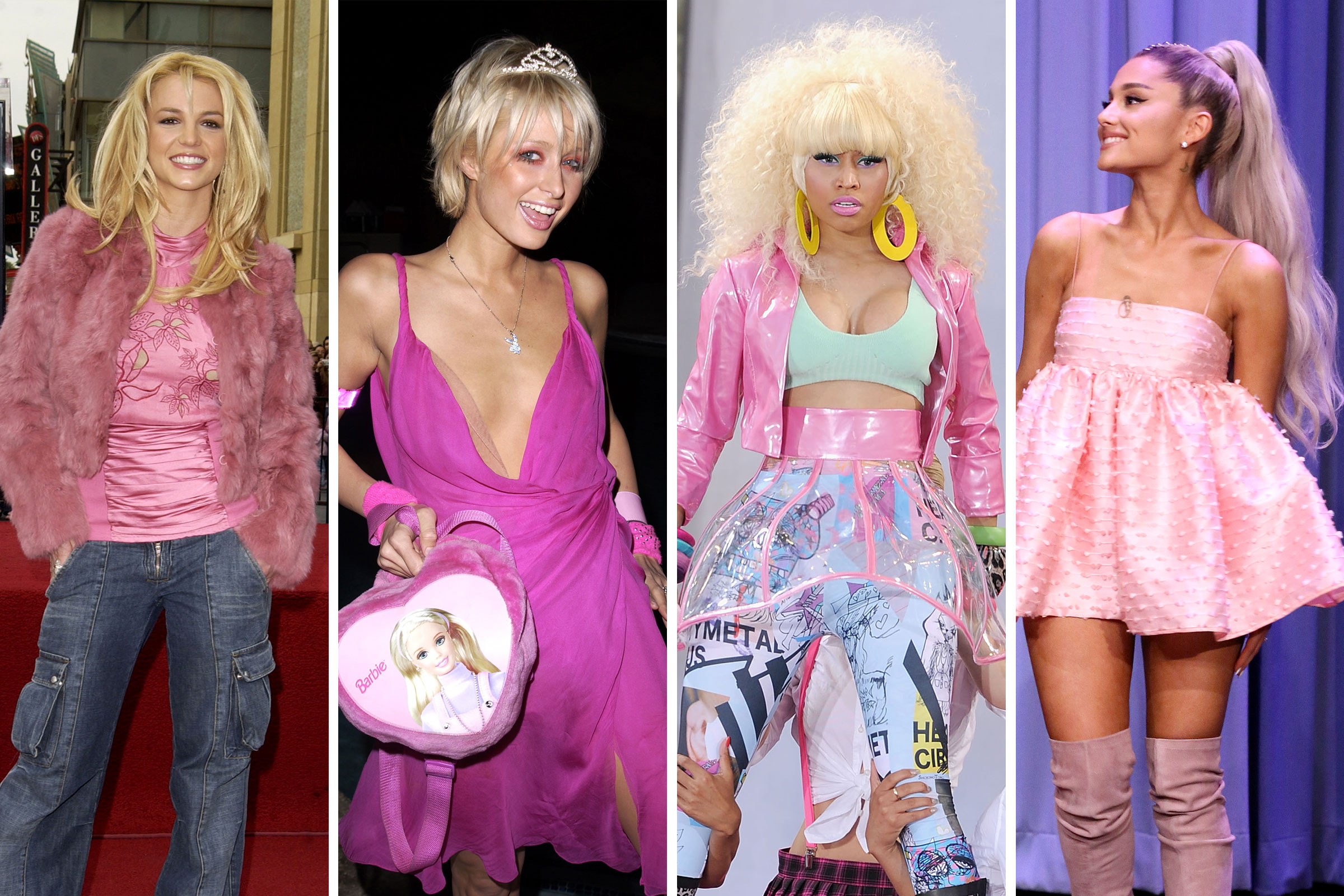
Barbiecore as we know it began with the rise of celebrity fashion figures of the early aughts like Paris Hilton, Nicole Richie, and Britney Spears, whose outfits, meticulously covered in tabloids, were hyper feminine and often pink or glittery, says Lisby. Costuming for films like Clueless, Legally Blonde, and later, Mean Girls, featuring distinct female characters in bright pink, also played a role in the trend’s popularity. In the late aughts, pop stars became instrumental in helping the trend gain momentum, from Ariana Grande’s hyper feminine style that can be traced back to Barbie, to the rapper Nicki Minaj, who has channeled the doll since 2010 through an alter ego known as “the Harajuku Barbie,” filling her lyrics, song titles and album art with references to Barbie and wearing a pink wig and a chain with the Barbie logo. Her fans even call themselves “the Barbz.” (For the upcoming Barbie movie, Minaj collaborated with Ice Spice on a “Barbie Girl” remix.)
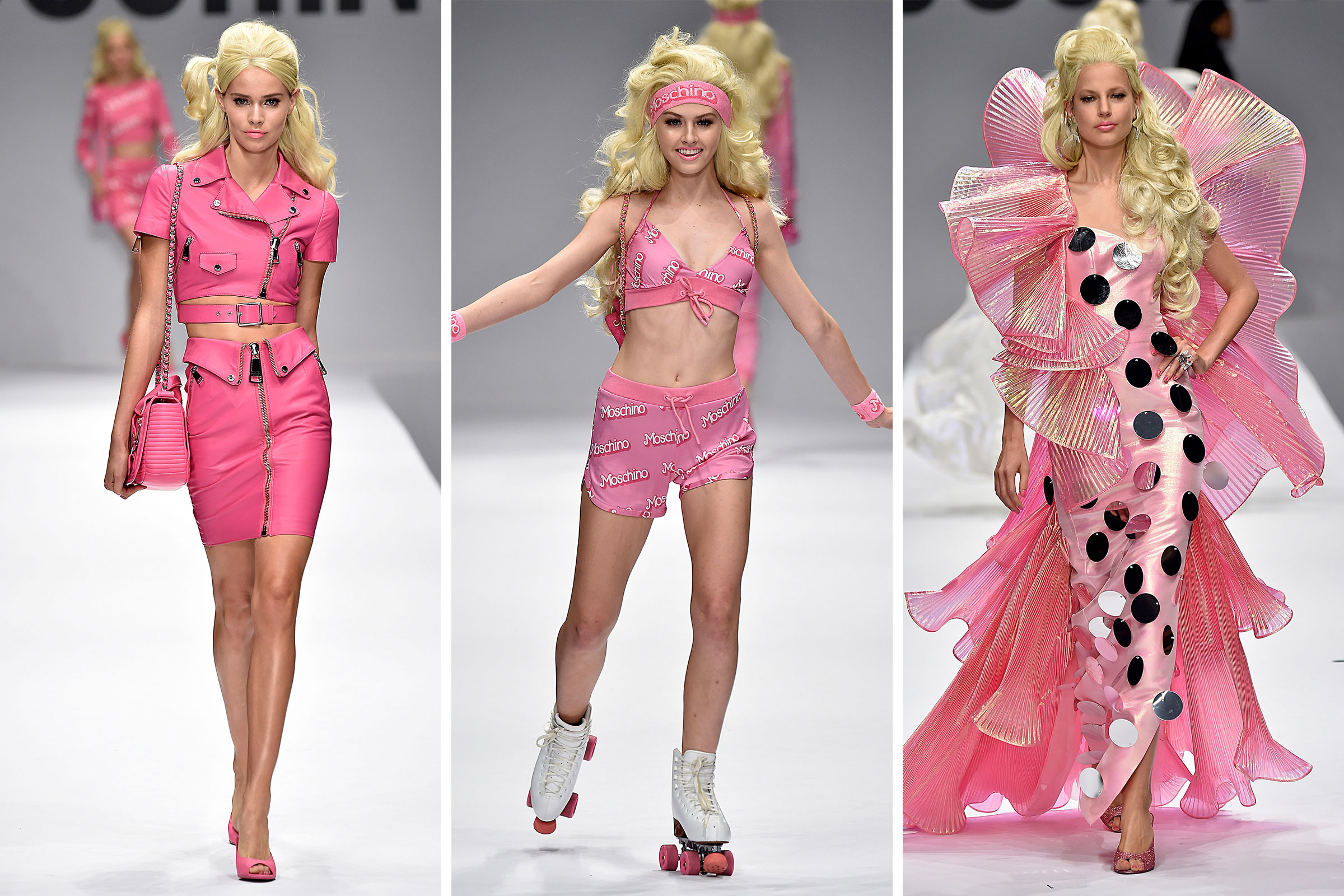
When it comes to the world of high fashion, Pierpaolo Piccioli’s 2022 all-pink Valentino fashion show, which spawned its own hot pink Pantone shade, is obviously front of mind, but the most outsize example of Barbie’s influence in fashion may be Jeremy Scott’s Spring/Summer 2015 collection for Moschino, which firmly centered Barbie and her iconography. At the show, models walked the runway in blonde wigs, pink ruffled evening gowns, and pink sportswear emblazoned with a Moschino logo in Barbie font, with the model Charlotte Free even racing down the runway in roller skates, in a nod to Mattel’s famous “Rollerblade Barbie.”
Why is Barbiecore so popular today?
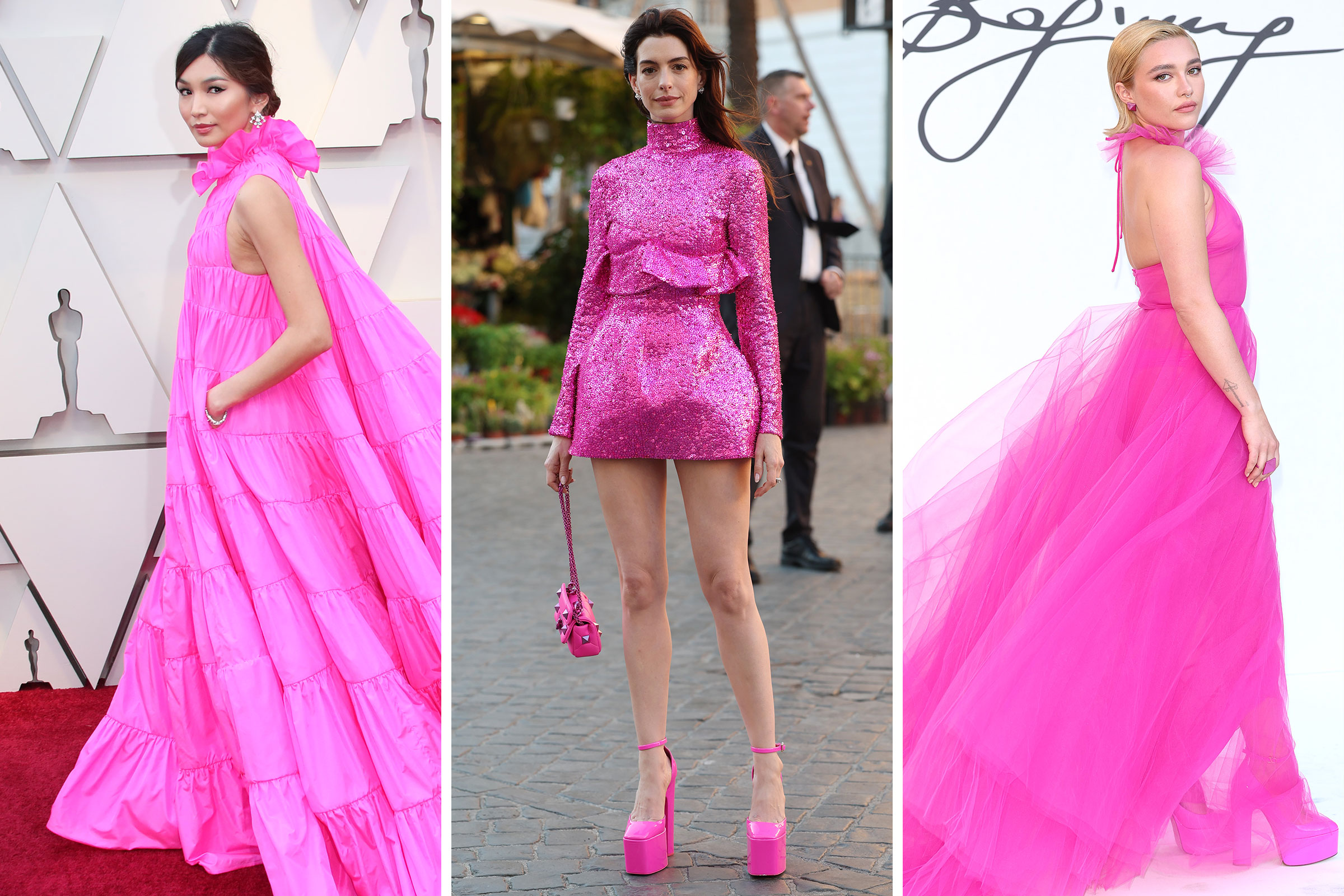
Emily Huggard, an assistant professor of fashion communication at Parsons School of Design, says the trend has taken off because of its playfulness, which is extra appealing in a post-COVID world. She points to other trends that have emerged following the pandemic, like “dopamine dressing,” the trend of wearing (often brightly colored) clothes that spark joy or make you feel good and notes that a common thread is a desire for ease and comfort.
“People are really latching on to escapism and things that they know and feel safe with,” she says. “When we think about this trend [Barbiecore], it’s pretty, it’s hot pink, it’s not too complex—I think people are craving a time when things felt less heavy.”
The leadup to Barbie’s release undoubtedly plays a part, too, in the trend’s reach. With about a month left until Barbie and Ken come to screen, people are donning all-pink outfits, with hot pink being especially in-demand, a seeming nod to the influence of Robbie’s Barbie outfit. On TikTok, where the trend went viral last year, the hashtag #Barbiecore has now racked up over 365 million views, while multiple Barbie fashion collaborations offering varying degrees of bubblegum and hot pink clothing and accessories, with brands ranging from the Gap to Forever 21, have emerged ahead of the movie.
Stone says that amid political strife and global health scares in recent years, a touch of the fantastical can provide some much-needed respite.
“The world is on fire and all the news is dark,” she said. “But there’s this bubbly, light, sparkly fantasy phenomenon out there that people can hold onto for a few minutes.”
Read more: Watch Barbie’s 57-Year Evolution in 37 Seconds
Huggard adds that the appeal of the trend of wearing all hot pink lies in its financial accessibility. While Mattel and the Barbie doll have been criticized for promoting narrow beauty ideals, particularly when it comes to size and race, Barbiecore is a trend that everyone can take part in on some level. Hot pink is a bold color that’s available at all price points. It’s a far more approachable trend to participate in than something like quiet luxury, whose expensive minimalism relies on a subtle, “if you know, you know” acuity. And that lends itself to virality on TikTok, Huggard says. Both the trend and the social media platform are tailored to sharing a cultural moment.
“We’re seeing hot pink at the Met Gala and on runways and it’s being marketed at different levels of the industry and different price points,” she said. “It’s a wide aesthetic that all people can buy into versus a quiet luxury item. They can invent it in different ways, but they’re still wearing it and it represents something.”
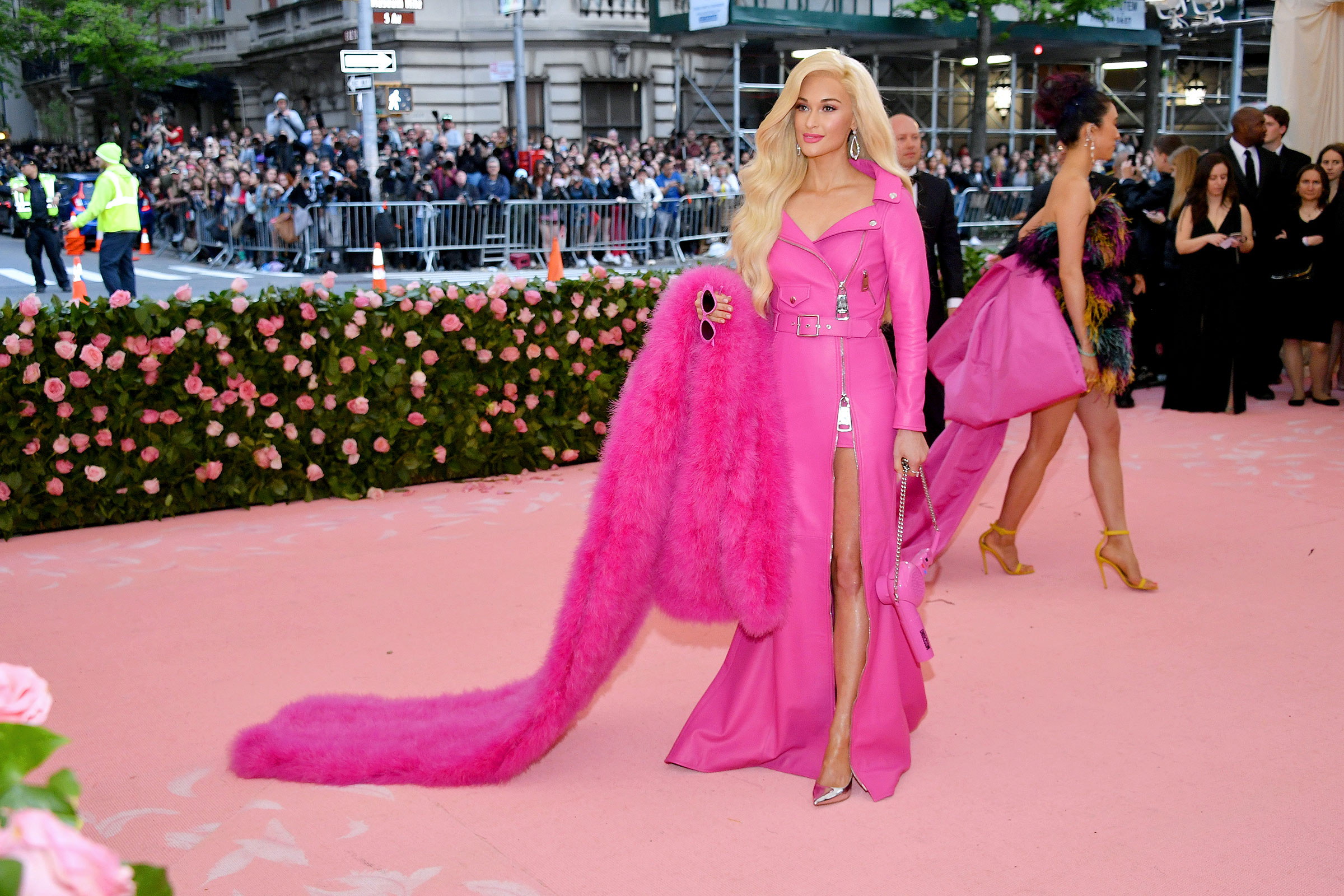
Lisby says Barbiecore’s current popularity reflects how much society has progressed since the doll was first created, noting that while many might associate Barbie and Barbiecore with hyperfemininity, it can also be a way for people to subvert or play with gender norms.
Read more: Barbie’s Problem Is Far Beyond Skin-Deep
“I see it as a vehicle for taking certain risks in fashion that you haven’t really seen in previous generations,” he said. “While women may have identified with it more earlier, now men may embrace it as a way of using fashion as a part of their own journey with gender identity or sexual preference.”
Ultimately, Barbiecore’s allure is parallel to that of the doll that inspired it—its ability to start a dialogue. “There are so many different conversations you can have because of the Barbie doll,” Lisby says. “From corporate marketing to society to our thoughts on gender, race, and size, there’s a reason why it’s had such incredible staying power.”
More Must-Reads from TIME
- Donald Trump Is TIME's 2024 Person of the Year
- Why We Chose Trump as Person of the Year
- Is Intermittent Fasting Good or Bad for You?
- The 100 Must-Read Books of 2024
- The 20 Best Christmas TV Episodes
- Column: If Optimism Feels Ridiculous Now, Try Hope
- The Future of Climate Action Is Trade Policy
- Merle Bombardieri Is Helping People Make the Baby Decision
Write to Cady Lang at cady.lang@timemagazine.com